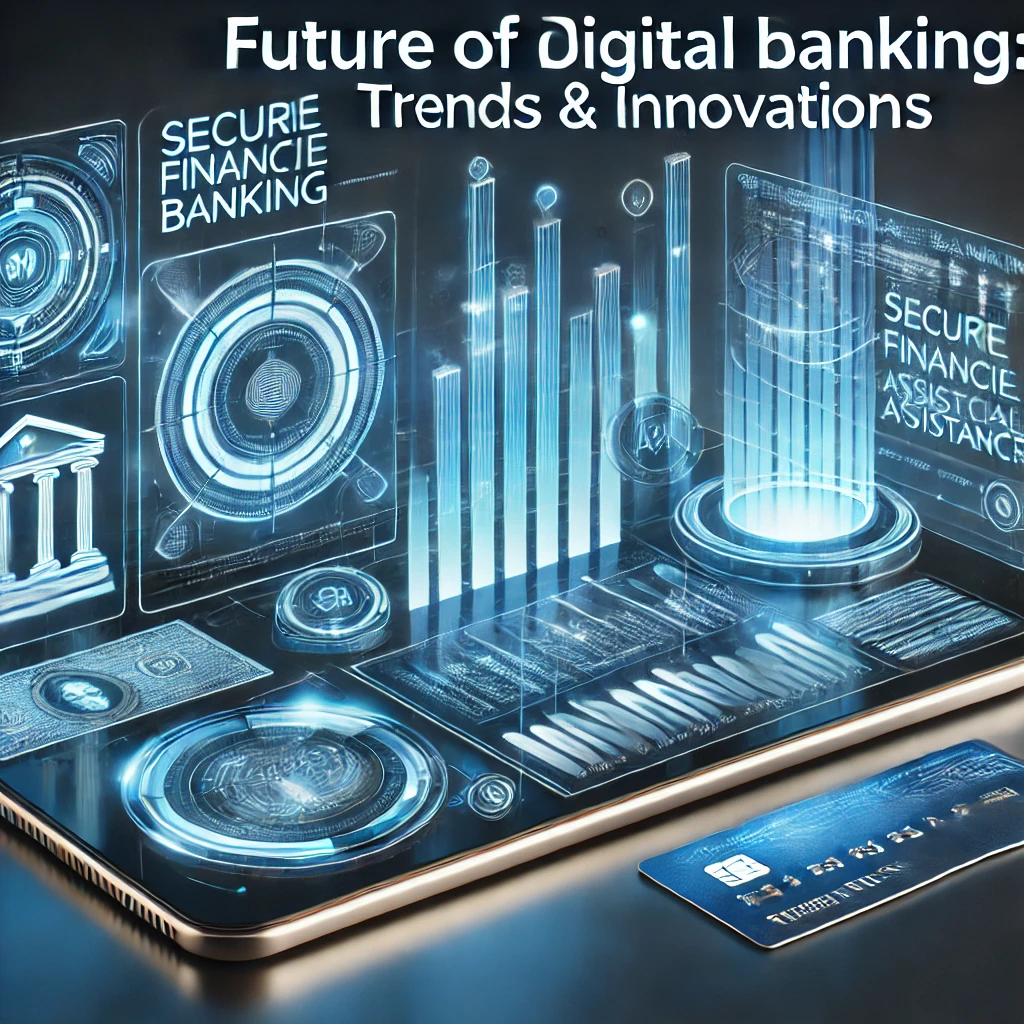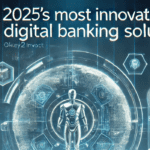Digital Banking has evolved rapidly over the past decade, transforming the way individuals and businesses manage their finances. With technological advancements and changing consumer expectations, banks continuously innovate to provide seamless and efficient Digital Banking Solutions. The Future of Digital Banking is shaped by emerging trends such as artificial intelligence, blockchain technology, open banking, and enhanced cybersecurity measures. This article explores the key trends and innovations shaping the Future of Digital Banking.
The Evolution of Digital Banking
Digital Banking emerged as an extension of traditional banking, enabling customers to conduct financial transactions online. Initially, Digital Banking Services were limited to basic functionalities such as Online Account access and electronic fund transfers. (Open a Free Demat & Trading Account)However, with the integration of cutting-edge technologies, Digital Banking has evolved into a comprehensive ecosystem that includes Mobile Banking, Digital Wallets, robo-advisors, and Contactless Payments. Also Read – Top 10 Banks in the World
Key Trends Shaping the Future of Digital Banking

1. Artificial Intelligence and Machine Learning
AI and ML are revolutionizing Digital Banking by enabling personalized customer experiences, fraud detection, and automated financial advisory services.
- Chatbots and Virtual Assistants: AI-powered chatbots enhance customer service by providing instant responses and resolving queries efficiently.
- Fraud Prevention: Machine learning algorithms detect unusual transaction patterns and mitigate security threats in real-time.
- Predictive Analytics: AI-driven analytics help banks anticipate customer needs and offer personalized financial solutions.
2. Blockchain and Cryptocurrencies
Blockchain technology is redefining security and transparency in Digital Banking.
- Decentralized Transactions: Blockchain enables secure, tamper-proof transactions without intermediaries.
- Smart Contracts: Automated contracts execute transactions based on predefined conditions, reducing fraud and operational costs.
- Central Bank Digital Currencies (CBDCs): Several governments are exploring CBDCs to facilitate faster and more efficient payments.
3. Open Banking and API Integration
Open banking allows third-party developers to create financial applications by accessing bank data securely through APIs.
- Improved Customer Experience: Open banking fosters innovation, providing customers with a wide range of financial services tailored to their needs.
- Increased Competition: Fintech companies can collaborate with traditional banks to offer enhanced services.
- Regulatory Compliance: Governments worldwide are introducing regulations to ensure data security and consumer protection in open Banking Ecosystems.
4. Enhanced Cybersecurity Measures
As Digital Banking expands, so do cyber threats, making security a top priority.
- Biometric Authentication: Fingerprint scanning, facial recognition, and voice authentication enhance security.
- End-to-End Encryption: Secure data transmission ensures customer confidentiality.
- Real-Time Threat Detection: AI-driven security systems identify and mitigate potential cyber threats instantly.
5. Personalized Banking Experience
Banks are leveraging data analytics and AI to offer hyper-personalized banking services.
- Customized Financial Products: Tailored Loan offers, investment recommendations, and savings plans enhance customer satisfaction.
- User Behavior Analysis: AI tracks customer spending habits to provide relevant insights and alerts.
- Loyalty and Reward Programs: Banks design personalized incentives to retain customers and enhance engagement.
6. Voice and Conversational Banking
Voice-assisted banking is gaining popularity as consumers seek hands-free banking solutions.
- Voice-Activated Transactions: Users can initiate fund transfers, check account balances, and pay bills using voice commands.
- Integration with Smart Devices: Digital Banking Services are integrated with voice assistants like Alexa and Google Assistant.
- Multilingual Support: Banks are expanding voice banking services to cater to diverse customer demographics.
7. Neobanks and Digital-Only Banks
Neobanks operate without physical branches, offering full Digital Financial Services.
- Lower Operational Costs: Digital-only banks provide cost-effective banking solutions.
- User-Friendly Interfaces: Simplified onboarding and intuitive mobile apps attract tech-savvy customers.
- Seamless Integration with Fintech: Neobanks partners with fintech companies to offer diverse financial products.
8. Internet of Things (IoT) in Banking
IoT technology is enhancing digital banking experiences through connected devices.
- Smart ATMs: IoT-enabled ATMs offer personalized banking services based on user preferences.
- Wearable Banking: Smartwatches and fitness bands enable contactless payments and account monitoring.
- Real-Time Alerts: IoT devices provide instant notifications on account activities and spending patterns.
9. Sustainable and Green Banking
Sustainability is becoming a key focus in digital banking.
- Paperless Banking: Digital documentation and e-statements reduce environmental impact.
- Sustainable Investments: Banks promote eco-friendly investment portfolios.
- Carbon Footprint Monitoring: Digital Banking Apps provide insights into users’ carbon footprints based on spending behaviour.
10. Super Apps and Embedded Finance
Super apps integrate multiple financial services into a single platform.
- Comprehensive Financial Solutions: Users can access banking, insurance, Investments, and payments through one app.
- Seamless Transactions: Embedded finance allows instant credit, lending, and financial services within everyday applications.
- Strategic Partnerships: Banks collaborate with fintech firms to enhance service offerings.
The Future Outlook of Digital Banking
The Future of Digital Banking is driven by innovation, customer-centric solutions, and regulatory advancements. As technology continues to evolve, Digital Banking will become more efficient, secure, and accessible. Key future developments include:
- Expansion of AI and Automation: Greater reliance on AI-powered financial management tools.
- Advancements in Quantum Computing: Enhanced data security and transaction processing speeds.
- Global Standardization of Digital Banking Regulations: Unified compliance measures for cross-border transactions.
- Further Integration of Decentralized Finance (DeFi): Increased adoption of blockchain-based financial solutions.
Important Iinks
- Margin Trading In Zerodha: Key Benefits and Strategies for 2025
- Dividends in Stock Market: Strategies for Steady Returns 2025
- Bank Statements and Transactions: Understanding 2025
- How to Choose the Best Crypto Wallet for You
- US Stock Market Sectors to Watch in 2025
- Invest In S&P 500 Index Fund: How To 2025
- Highest FD Interest Rates 2025 in India – Best Banks & Top Offers
- Common Mistakes to Avoid in Stock Trading For Beginners 2025
- Equity vs Debt Mutual Funds: Difference and Which is Better
- Role of Banks in Funding Startups and Entrepreneurs 2025
- How To Open 5paisa Account: Online and Offline 2025
- Crypto Investment Strategies for Long-Term Gains 2025
- What Is 401(K) Benefits for Retirement Savings?
- Demat Account Update KYC Online: Quick & Easy
- Types of Savings Accounts in the U.S. 2025
- How to Invest in IPOs for Maximum Returns
- Margin Trading Stocks: How It Works & Risks to Know
- SIP vs LumpSum: Smart Mutual Fund Investing in 2025!
- Bank of America CD Rates & Account Options for 2025
- Future of Digital Payments in India: What to Expect in 2025
- Benefits of Index Funds in Your Portfolio
- Start Investing In Stocks India: A Beginner’s Guide for 2025
- Best CD Rates in the U.S. for 2025
- Residential vs Commercial Real Estate: Which is better investing?
- Real Estate Investment Opportunities 2025
- Certificates of Deposit (CDs): Types, CD ladder Strategy
- Top Features of Modern Savings Account 2025
- New AI Tools for Investors: Get a Financial Edge in 2025
- Top 10 US Stock Brokers in India for Investing in 2025
- Good Investment Options for Beginners in India 2025
- How To Trade In US Stocks From India: Easy Ways to Start
- Investing in Bonds: Yields, Types, Benefits, Risks, and Strategies
- Securities Depository Guide: Benefits, Safety & Investments 2025
- Easy Guide to Open a Free Demat & Trading Account in 2025
- How to Set Investment Goals with Mutual Funds 2025
Conclusion
Digital Banking is undergoing a paradigm shift, driven by emerging technologies and evolving consumer expectations. The Integration of AI, blockchain, open banking, and cybersecurity measures are shaping a more efficient, secure, and personalized banking experience. As banks and fintech companies continue to innovate, the Future of Digital Banking promises greater financial inclusivity, seamless transactions, and sustainable growth. Staying ahead of these trends will be crucial for banks aiming to remain competitive in the digital era.



